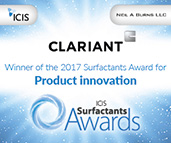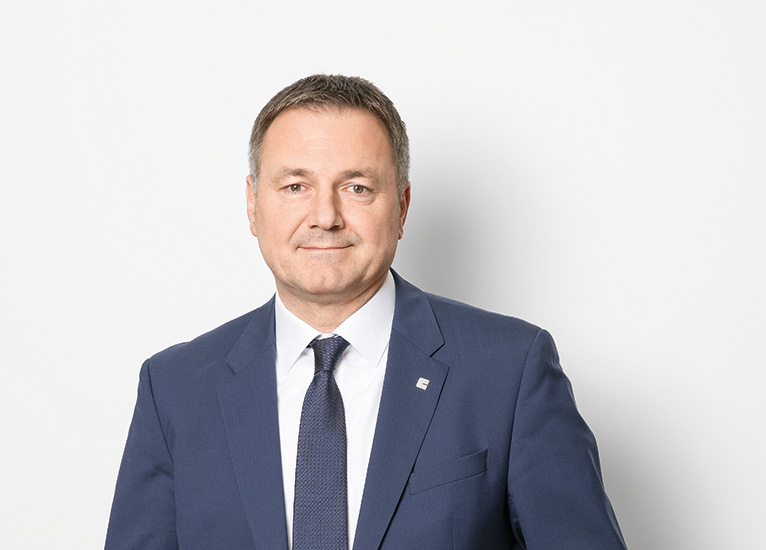Idea to Market
By focusing on technology and innovation, Clariant stays ahead in dynamic markets. More than 1 100 employees in Research and Development strive daily to develop innovative and sustainable solutions for customers by using leading technologies. Eight Research and Development Centers, more than 50 Technical Centers, and more than CHF 1 billion spent on R&D since 2013 — with CHF 211 million in 2017 alone — support Clariant’s Innovation Chain. In this elaborate setup, four Technology Platforms support all Business Areas at translating unmet customer needs into market-ready solutions.
 Idea to Market
Idea to Market
Core business activities that create additional value are structured into three value creation phases at Clariant. Idea to Market encompasses scouting global trends and ideas, scoping out customer needs, executing product development and commercializing, and monitoring product performance.
1. Addressing new market needs across disciplines
With society’s needs evolving quickly, the challenges and opportunities for the chemical industry are also changing rapidly. Products suitable for reuse and recycling are critical for a »circular economy« that can thrive with limited resources, and replacements for harmful substances are required to respond to continuously evolving regulations and stakeholder expectations.
Chemical processes must improve their tolerance of fluctuations in the quality of raw materials to allow the reuse of waste products and the increasing use of bio-based raw materials in production. In addition, the industry needs more options to run chemical processes with highest resource efficiency and lowest energy consumption. Achieving this requires strong interdisciplinary collaboration. In particular, insights from classical chemistry and biotechnology need to be combined with catalysis and process technology to provide the basis for product and process innovation.
2. Focusing on four platforms
Clariant’s Research and Development activities are aligned closely with these shifting market needs. They are bundled in the centralized department Group Technology & Innovation and structured along four Technology Platforms: Chemistry & Materials, Biotechnology, Catalysis, and Process Technology. FIGURE 001

Clariant’s sugar-based, innovative Glucamide product platform was awarded the ICIS Surfactants Award 2017.
The Technology Platform Chemistry & Materials combines all activities of Chemical Research and serves as an ideal platform for transferring knowledge between application areas. The renewable, sugar-based Glucamide product platform, which was first applied in the Home Care field, is a perfect example. This platform has since been extended into Personal Care and Crop Protection as well as Oil & Mining applications, for example in chemically enhanced oil recovery. As a recognition of its multidisciplinary character, Clariant’s Glucamide Technology was awarded the ICIS Surfactants Award 2017 for product innovation.
The Biotechnology platform’s tailor-made processes for creating sustainable, bio-based chemicals and biofuels also has tremendous potential for cross-product application. In 2017, the start-up project Biofuels & Derivatives took significant steps to commercialize Clariant’s sunliquid® technology, which converts agricultural residues into cellulosic ethanol.
The advanced biofuel reduces greenhouse gas emissions by 95%, which has generated interest among governments. China, for example, announced the objective of using bioethanol-gasoline blend nationwide by 2020. The government plans to build several demonstration facilities that will be able to produce cellulosic ethanol at an industrial scale.
Clariant signed its first licensing agreement for sunliquid® with Enviral, the largest producer of bioethanol in Slovakia, which will produce 50 000 tons of cellulosic ethanol annually. Furthermore, Clariant invested in a new full-scale commercial plant to produce cellulosic ethanol in Romania. The flagship site underlines the competitiveness and sustainability of the technology and supports Clariant’s sunliquid® licensing business strategy.
125
Clariant was engaged in more than 125 scientific collaborations during the course of 2017.
001 CLARIANT INNOVATION CHAIN
Research and Development in the Technology Platform Catalysis builds on strong external technology partners to derive optimal solutions. For example, in the cross-industry renewable energy Kopernikus initiative, led by the German Federal Ministry of Education and Research (BMBF), Clariant designs catalysts for the LOHC (Liquid Organic Hydrogen Carriers) technology. Another example of the more than 125 scientific collaborations that Clariant engaged in during the course of 2017 is MuniCat, the Munich Catalysis Alliance between Clariant and the Technical University of Munich (TUM), which is rooted in a long tradition of joint research projects on industrial catalysis. For more information about MuniCat, please refer to the story »Boosting innovations«.
For all innovations, developing state-of-the-art and highly sustainable processes is crucial to bring them to scale. The Process Technology Platform enables the application of new technologies, such as micro-reactor technology or digitalization for self-learning automated data analytics, which allows real-time optimization of production plants all over the world.
2.5
Growth through innovation amounted to 2.5% of the overall growth of the company. The growth rate contains the contribution to growth from both Top Line Innovation as well as Life Cycle Innovation. Potential cannibalization of existing sales caused by Life Cycle Innovation in cases has not been excluded from calculation.
3. Combining technology push and market pull
Group Technology & Innovation (GTI) and the Business Units collaborate closely. Some of the ideas for fulfilling unmet market needs are born in GTI’s research and development labs and then tested extensively in the application development labs of the Business Units. Other innovations are driven by the Business Units’ links to their markets and their collaborations with customers on new product requirements, providing the basis for GTI’s chemists to synthesize new products. Technology push and market pull play hand in hand until application development experts can select the most promising product for further evaluation by customers.
4. Building on a strong base
New Business Development, Group Engineering, and Intellectual Property Management are essential to support all innovations. New Business Development identifies and develops new business opportunities beyond the scope of Clariant’s current Business Units. In addition, it incubates new businesses. Currently the new businesses developed are Food Ingredients, Electronic Materials, Additive Manufacturing, and Encapsulation Technology. Geared by a deep understanding of natural ingredients and systems at highest quality standards, Food Ingredients offers tailor-made solutions for the food and beverage industry. Electronic Materials creates sustainable solutions for electronics manufacturing, such as PRELECT® TPS Nano Silver Conductive Inks, which make direct printing of conductive patterns possible on almost any surface. In the fast-changing additive manufacturing market, the new Clariant 3D Printing business leverages the company’s numerous years of experience in tailoring polymers for a broad range of end market applications to provide high-grade, 3D printer filaments and specially made solutions. Encapsulation Technology provides an innovative, robust, and low-cost technology, which helps to protect both oil as well as water soluble active ingredients from oxygen and light degradation as demonstrated with Vitispheres® encapsulated active ingredients. (Chapter Care Chemicals)
Open Innovation
clariant.com/Open-Innovation
One of the initiatives that New Business Development manages is Open Innovation. The Open Innovation team identifies collaboration partners, ranging from large corporations to small start-ups and universities. It supports all business units in connecting with external partners around the world. In 2017, the Open Innovation team was expanded to Shanghai to capitalize on business opportunities in Asia.
During the development of processes to manufacture new products, Group Engineering – an internal center of excellence – designs, plans, and executes capital investment projects, and commissions new chemical production plants and site infrastructures. Their Competence Centers ensure best practices across all units, e.g. in environmental technologies or energy management.
6 600
At the end of 2017 Clariant held 6 600 patents and 8 300 trademarks.
Product development also involves Intellectual Property Management, which maximizes the global value of technology and innovation by providing crucial information to the Innovation Community within Clariant and strategically managing Clariant’s 6 600 patents and 8 300 trademarks.
5. Progressing through clear stage gates
Clariant Innovation Excellence (CIX) supports growth by ensuring that innovation projects are managed according to Clariant’s Idea-to-Market process. CIX provides an elaborate toolbox that allowed Clariant to work effectively on more than 370 innovation projects (Class 1 and Class 2) in 2017 alone. This toolbox supports ideation to address unmet market and customer needs, developing business opportunities and efficient execution of innovation projects.
> 370
272 specially trained Innovation Belts and project leaders managed over 370 innovation projects, including 65 Class 1 projects.
This innovation process is structured with a stage-gate process. The stage-gate process ensures the quality of new product and process development projects by checking all new projects at critical stages of development called gates. At the gates the projects are reviewed for attractiveness, plausibility/risk, and completeness in regards of requirements for the respective stage within the five project dimensions: market, unmet need, offering, business case and project management.

»Scientific collaborations are ensuring the connection to cutting-edge technologies.«
Martin VollmerChief Technology Officer, Head of Group Technology & Innovation
6. Leading innovation projects to success
Six criteria regarding expected benefit and costs, complexity, and strategic relevance determine how a project is classified and managed.
The most business-relevant innovation projects in 2017, categorized as Class 1, were led by Clariant’s 17 Innovation Black Belts who typically dedicate all their time to managing two to three Class 1 projects. Read more about the daily work of an Innovation Black Belt (chapter Delivering Solutions). Class 2 and Class 3 projects were led by the 250 Innovation Green Belts or by trained Class 3 project leaders. FIGURE 002 For these two groups, project management represents approximately 20 to 30% of their work. The five dedicated Innovation Master Black Belts support the so-called Innovation Champions in innovation portfolio management and coach project teams to manage projects in such a way that uncertainty is reduced along the way. The Innovation Champions are responsible for coordinating the stage-gate review execution and reporting the innovation status-quo to the Innovation Portfolio Committee, among other duties.
7. Integrating sustainability throughout
At Clariant, sustainability fuels innovation and New Business Development. Particular sustainability challenges that our society is facing can also lead to new ideas for project or product development and business scouting. For this purpose, Sustainability Trend meetings are held several times a year at global, and in the future at regional levels, in order to scrutinize challenges from different business and geographic perspectives and evaluate potential ways of addressing them using Clariant’s expertise in chemistry and material science. In addition, every innovation project is screened for sustainability aspects. Sustainability is not just the goal of certain innovation projects but a fundamental prerequisite for all new solutions under development. To harmonize screening for innovation projects with screening for existing products, previously separate Corporate Sustainability Assessments for innovations were integrated into the Clariant Portfolio Value Program in 2017. The innovation project pipeline is thus being screened according to the same sustainability criteria valid for the entire product portfolio under the PVP.

VERITRAX™
The pioneering digital system increases production efficiency in the oil and gas fields.
8. Digitalization as enabler
Increasing digitalization enables – and in some cases demands – new business models. For example, Clariant has taken a pioneering role with its VERITRAX™ solution, which offers oil and gas producers significant improvements in operating efficiencies and uptime through automatic chemical control, monitoring, and ordering. VERITRAX™ was nominated for the ChemE »Process Safety Award 2017«, the 2017 World Oil Awards »Best Data Management & Application Solution Award«, the ICIS 2017 Innovation Awards »Best Process Innovation«, and the TOTAL Supplier Awards in the category »Innovation/The Digital Wave«. (Chapter Natural Resources)
002 Innovation projects: Classification and Management
Input
Performance
R&D spend in CHF m (3.3 % of Group sales)
Scientific Collaborations
Active Innovation Projects (Class 1 and 2)
R&D Centers
Technical Centers
People
Employees in R&D
Training hours in Group Technology & Innovation
Planet
Output
Performance
Patents at year end
Growth through Innovation1
People
Employees with Innovation Belts (250 Green Belts, 17 Black Belts and 5 Master Black Belts)
Planet
-
Financial Capital
-
Intellectual Capital
-
Manufactured Capital
-
Human Capital
-
Relationship Capital
-
Natural Capital
1 Contains the contribution to growth from both Top Line Innovation as well as Life Cycle Innovation. Potential cannibalization of existing sales caused by Life Cycle Innovation in certain cases has not been excluded from calculation.
In 2013 Clariant adjusted its reporting segments and grouped its businesses with similar end-user markets and growth drivers into four distinct Business Areas: Care Chemicals, Catalysis, Natural Resources, and Plastics & Coatings. VIEW ENTIRE GLOSSARY
Core business activities that create additional value are structured into three value creation phases at Clariant. Idea to Market encompasses scouting global trends and ideas, scoping out customer needs, executing product development and commercializing, and monitoring product performance. VIEW ENTIRE GLOSSARY
Stakeholders are people or groups whose interests are linked in various ways with those of a company. They include shareholders, business partners, employees, neighbors, and the community. VIEW ENTIRE GLOSSARY
A substance that lowers the activation energy, thereby increasing the rate of a chemical reaction without being consumed by the reaction itself (Clariant Business Unit Catalysts). VIEW ENTIRE GLOSSARY
A substance added to products in small quantities to achieve certain properties or to improve a product (Clariant Business Unit Additives). VIEW ENTIRE GLOSSARY
The pool of funds available to the company for use in the production of goods or the provision of services. This can include funds obtained through financing, such as debt, equity, or grants, and funds generated by the company, for example through sales or investments. VIEW ENTIRE GLOSSARY
Knowledge-based intangibles used and created by the company, often in collaboration with partners. This can include intellectual property, such as patents, trademarks, copyrights, software, rights, and licenses, and »organizational capital« such as tacit knowledge, systems, procedures, and protocols. VIEW ENTIRE GLOSSARY
Manufactured physical objects such as buildings, equipment, and products. These can include objects that are available to the company for use in the production of goods or the provision of services, or that the company produces for sale to customers or for its own use. VIEW ENTIRE GLOSSARY
The company’s staff and its composition, competencies, capabilities, experience, and motivation to innovate. This can include employees’ alignment with corporate values and their ability to understand and implement the company’s strategy. VIEW ENTIRE GLOSSARY
Key relationships including those with significant groups of stakeholders and other networks. This can include shared values, the trust and willingness to engage that the company has developed, and related intangibles associated with its brand and reputation. VIEW ENTIRE GLOSSARY
Renewable and nonrenewable environmental resources and processes that support the past, current, or future prosperity of the company or are affected by it. Examples can include resources related to air, water, and land that are utilized or impacted for example by emissions. VIEW ENTIRE GLOSSARY
